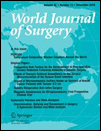Postoperative Small Bowel Obstruction Following Laparoscopic or Open Fundoplication in Children: A Retrospective Analysis Using a Nationwide Database
Abstract
Background
Postoperative small bowel obstruction (SBO) is one of the most serious adverse events resulting in deteriorated quality of life in children. Numerous studies have shown that laparoscopic surgery significantly reduces the occurrence of SBO compared with open surgery in adults. However, evidence of the advantages of laparoscopic surgery over open surgery in terms of reducing SBO is lacking in children. Fundoplication is a common abdominal procedure in children. This study was performed to compare the occurrence of SBO after laparoscopic fundoplication (LF) versus open fundoplication (OF).
Methods
Using the Diagnosis Procedure Combination database, a national inpatient database in Japan, we retrospectively identified patients aged 0–18 years who underwent LF or OF from July 2010 to March 2016. Propensity score adjustment was used to compare the occurrence of SBO between the groups.
Results
We identified 1838 eligible patients who underwent LF (n = 1362) or OF (n = 476). The median age at surgery was 4.0 and 1.5 years in the LF and OF group, respectively (P < 0.001). The median weight at admission was 11.4 and 7.5 kg, respectively (P < 0.001). Nineteen (1.4%) patients in the LF group and 13 (2.7%) in the OF group had at least one episode of SBO (P = 0.11, log-rank test). In the propensity score-adjusted Cox regression analysis, SBO was significantly less likely to occur in the LF than OF group (hazard ratio, 0.36; 95% confidence interval 0.16–0.82; P = 0.01).
Conclusions
In this retrospective nationwide study, LF was significantly associated with a reduction in SBO compared with OF in children.




